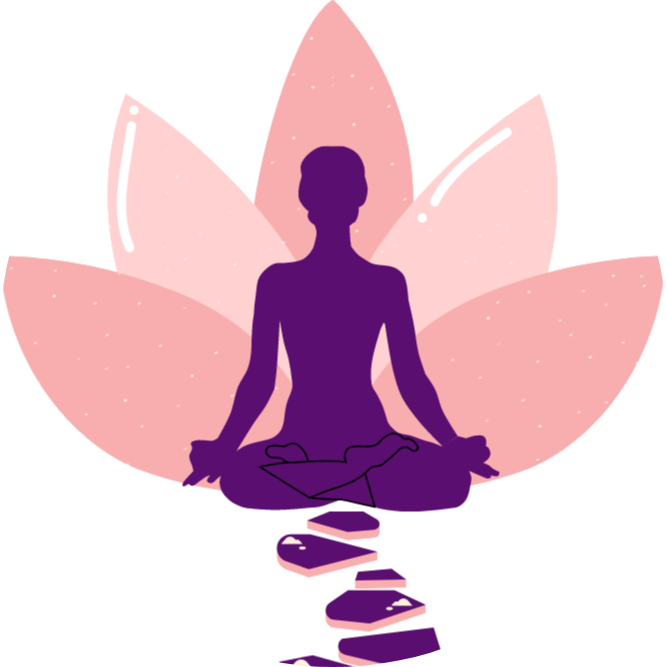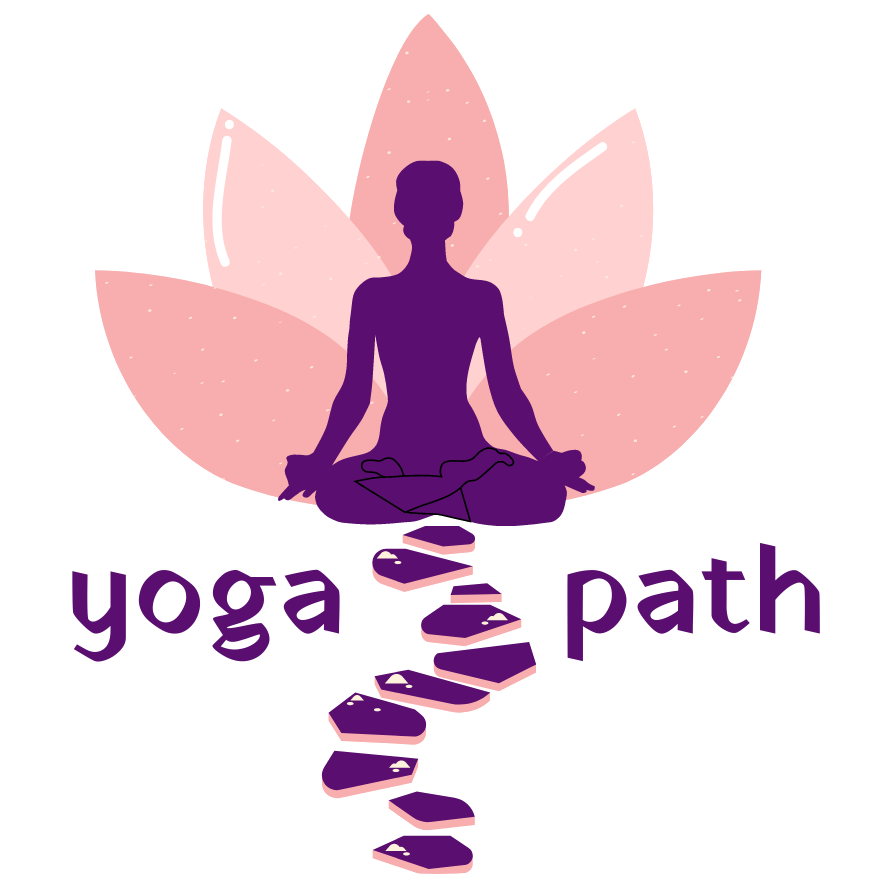Heal your back with Yoga
ASANAS FOR BACK PAIN RELIEF
Silently suffering with back pain? Yoga may be just what you need.
With yoga you not only help heal the body and the aches but completely relax the stress that we have the ability of knotting up in different spaces – especially the back.
These asanas will not only help you regain your strength and right posture but completely unwind your mind – the root of all stress
Just a few minutes of these asanas done daily, will open up spaces in your back and bring awareness to your own body and your ability to allow energy and breath to flow properly through your body.
Bhujanga Asana
Prone Position – Back Bend
Bhujanga Asana meaning Cobra Pose, is also a part of the Surya Namaskar (salute to the sun)
Lie down on your abdomen with your toes flat on the floor, soles facing upwards; rest your forehead on the ground. Keep your legs close together, with your feet and heels lightly touching each other. Place both palms beside the chest elbows should be bent and close to your torso.
As you inhale slowly lift your head, chest and upper part of abdomen. Keep your navel on the floor. Keep elbows close to body.
Keep breathing with awareness, as you curve your spine upward vertebra .by vertebra look straight ahead. Maintain this pose for a few seconds while breathing evenly for 4-5 breaths.
Now, breathe out, and gently bring your abdomen, chest, and head back to the floor and relax.
Contraindications:
Hernia, Hypertension, Heart Ailments, Pregnancy, Peptic ulcer and Hyper thyroid
Benefits:
Helps align vertebra
Strengthens Muscles of Back and spine and keeps spine flexible
Relief from back pain
Stimulates spinal nerves
Tones abdominal muscles And organs
Alleviates constipation
Stimulates appetite
Prevents diseases by aiding in elimination through intra abdominal pressure
Relief from flatulence
Helps resolving slipped disc
Relief in Ankylosing Spondylitis and kyphosis
Helps in menstrual and gynaecological disorders
Strengthens willpower alertness and increases determination
Adho Mukho Shvanasana

Inversion Asana
Adho meaning down, mukho meaning Face, svana meaning Dog. This asana too is part of the flow of surya namasakar (salute to the sun).
The name is derived from the way the dog stretches his front limbs when getting up.
In this pose, we can start by sitting on all fours in a table top position with knees and palms on the floor. The palms are at shoulder distance on the floor also the knees and feet are at hip distance apart. Lift the knees up to raise the hips up as you inhale. The weight of the body is on both palms and feet. With both arms straight at the elbows and the legs being straight at the knees the hips are raised up the head is down with arms close to the ears. We try to press the chest into the thighs just as we try to close a book to make a V shape. As you exhale, lower down the knees, hips and back into table top.
Contraindications:
Pregnant women, high blood pressure, Weak eye capillaries,
detached retina, or any other infection or inflammation of the eyes and ears and shoulder or back injury
Benefits:
Stretches the hamstring and calf muscles
Strengthens arms and shoulders, legs and ankles
Relaxes and strengthens back muscle
Strengthens abdominal muscles and core
Improves posture
And calms the heart
Setuband Asana
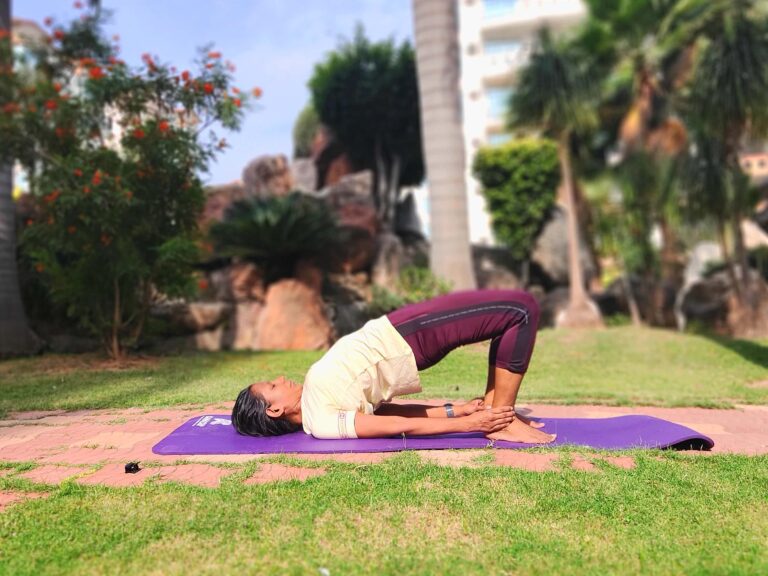
Supine Asana
Setu meaning Bridge; Bandha meaning Bind or Lock;
To begin, lie on your back. Fold your knees and keep your feet hip distance apart on the floor, close to your pelvis, with knees and ankles in a straight line.
Place your palms on your ankles. Inhaling, slowly lift your lower back, middle back and upper back off the floor; gently roll the shoulders inwards; raise the chest to the chin supporting your weight with your shoulders, arms and feet.
Both the thighs are parallel to each other and to the floor. Hold this pose for few breaths. exhale as you gently release the pose.
Contraindications:
Neck injuries, Shoulder or back injuries or surgery, Hypertension, Heart ailments, Myopia and Glaucoma or retinal detachment.
Benefits:
Strengthens the back muscles
Relaxes back instantaneously
Gives a good stretch to the chest, neck and spine
Opens up the lungs and reduces thyroid problems
Strengthens glutes and quadriceps
Calms the brain, reducing anxiety, stress and depression
Helps improve digestion
Helps relieve the symptoms of menopause and menstrual pain
Helpful in asthma, high blood pressure, osteoporosis, and sinusitis
Trikonasana or Extended Triangle pose
Standing Position – Sideward Bend
Trikona meaning Triangle
In this pose, begin with both feet 3 feet apart. Turn the right foot out pointing to the right at a right right angle to the left foot.
Inhaling in 3 seconds, raise both arms out at shoulder level with palms facing downward.
Exhaling in 3 seconds and gazing at the right palm we extend and lower the right palm to the right foot at the same time raising the left arm straight above. Then turn the gaze to the left thumb of the arm above. The legs and hands are straight. The upper left hand and lower right hand are aligned in one straight line lift the left shoulder up so that the shoulder is also in one line aligned with the arms. Hold this pose for 6 seconds.
As you exhale in 3 seconds, turn your gaze to the lower arm, raise both arms to shoulder level and lower them down by your sides. Repeat the same on the left side.
This is one round. Practise 3 rounds.
Contraindications:
Spinal injury, Back injury or Shoulder injury, Frozen shoulder and severe arthritis, Hypertension and serious cardiac complaints.
Benefits:
Stretches, develops and tones the muscles of the sides and the obliques
Strengthens the back and improves posture
A very good compression and twist to the abdomen and the organs therein
Improves digestion
Stimulates the nervous system
Relieves symptoms of menopause
Marjari Asana & Bitila Asana
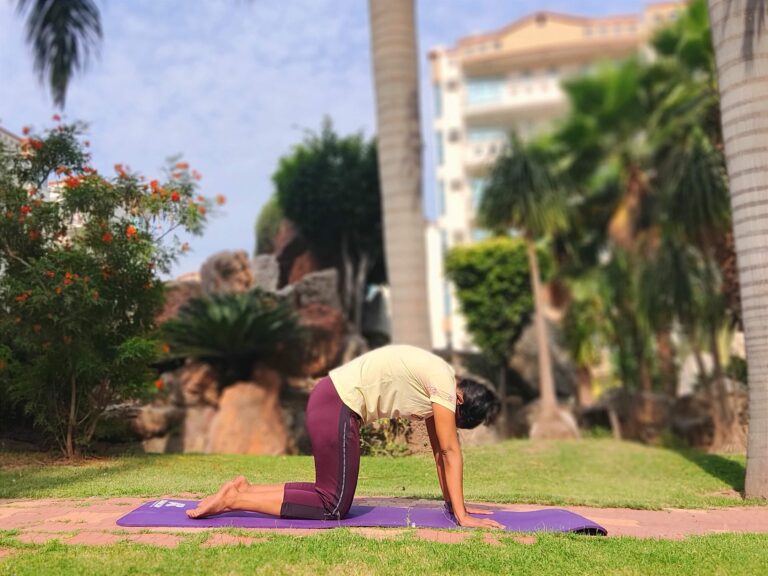
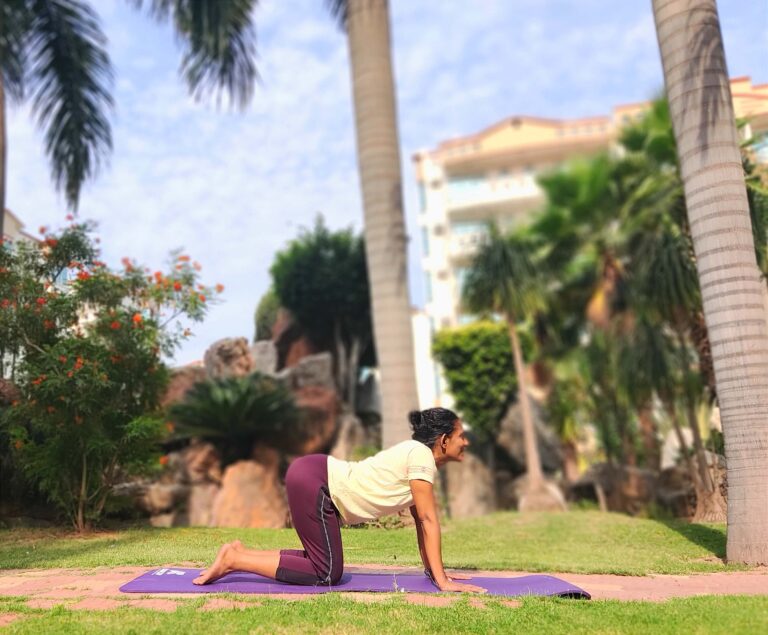
Forward Bend & Backward Bend
Marjari meaning Cat, Bitila meaning Cow
In this asana, sit in Vajrasana then come on all fours or table top with with knees and palms on the floor. The palms are at shoulder distance on the floor also the knees and feet are at hip distance apart. The palms are directly under the shoulder with arm perpendicular to the floor and the knees are under the hips. Look straight ahead. As you inhale, raise your chin, tilt your head and chest back pushing the palms firmly into ground push your navel downwards and raise your tailbone. Hold this cat pose and take long, deep breaths.
Follow this by Bitilasana, a counter pose: As you exhale, drop your chin to your chest and arch your back up as much as you can; pull in the pelvic and chest to form a curve in the spine. Hold this pose for a few seconds.
Contraindications:
Weak wrists injury or surgery to wrists
Shoulder injury back injury
Weak or injured knee – use padding under knees
Benefits:
Brings flexibility to the spine
Stretches the back and relaxes it
Stretches the scapula out and in and increases mobility
Strengthens lower back
Strengthens wrists and shoulders
Massages the digestive organs and improves digestion
Tones the abdomen
Relaxes the mind
Relieves menstrual pain
Improves focus
Improves blood circulation
Supta Vakrasana – Lying Down
Supine Position – Spinal torsion
Lie down on your back on the mat, legs stretched forward and hands by the sides Stretch the arms out, perpendicular to the body in a T.
Now, fold the legs at the knees and draw the feet in. Keep the feet and knees together, perpendicular to the floor. Inhale normally. Exhaling, in gently let the legs fall together to the left, to allow the knees to rest on the floor with both knees one above the other. Simultaneously, turn the neck to the right, to gaze at the right thumb.
Hold this pose for few seconds, with the breath suspended. Move the legs raising the knees back up while inhaling. Without a pause, exhaling, in 3 seconds, repeat the above steps to the right, to complete 1 round.
Contraindications:
Severe back pain, Abdominal inflammations, Ulcers and Sciatica.
Benefits:
Exercises and relaxes the spinal muscles
Gently exercises the abdominal and back muscles
Helps alleviate chronic back and shoulder pain
Lower back – strengthens muscles, relieves stiffness and alleviates pain
Improves digestion and combats constipation
Trims the waist line and reduces abdominal fat
Shashank Asana
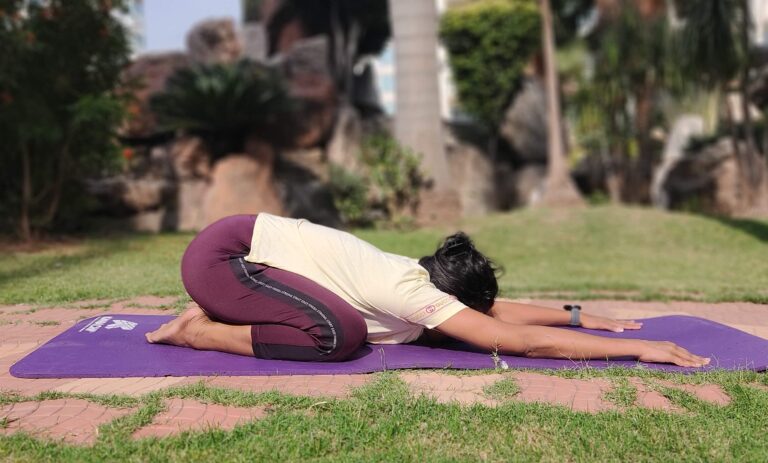
Prone Position – Forward Bend
Contraindications:
Vertigo, high blood pressure, knee problems or slipped disc.
Pregnant women should refrain from practising this asana.
Benefits:
Massages the abdominal organs, muscles and organs of the pelvic region.
Improves digestion and alleviates constipation.
Relaxes the spine and all muscles of back.
Improves functioning of adrenal glands.
Stretches back muscles and strengthens it.
Enhances the health of reproductive organs.
Relaxes sciatica nerve.
Improves blood supply to the head and therefore nourishes the eyes and all brain functions.
Helps to relieve fatigue and promotes concentration.
